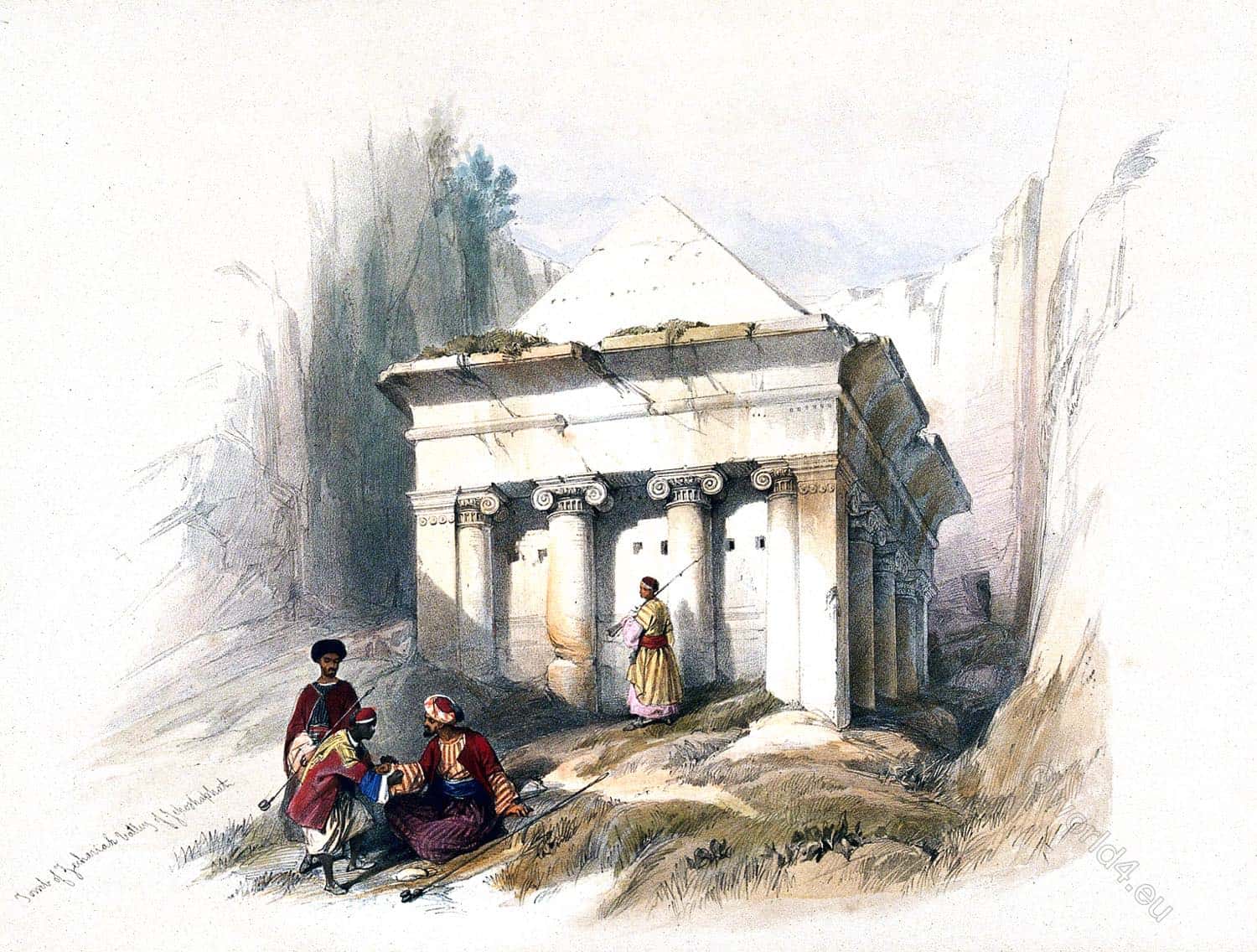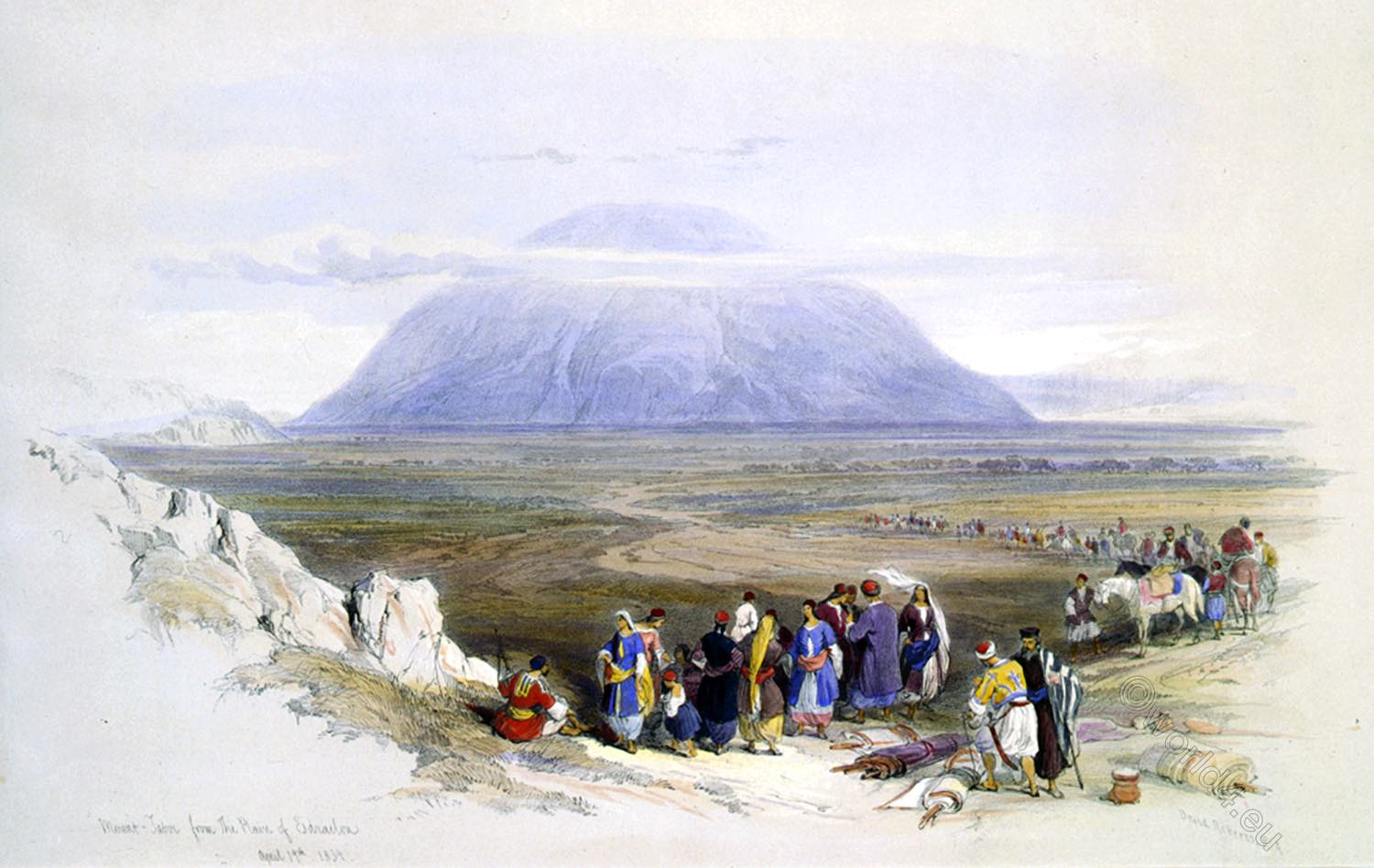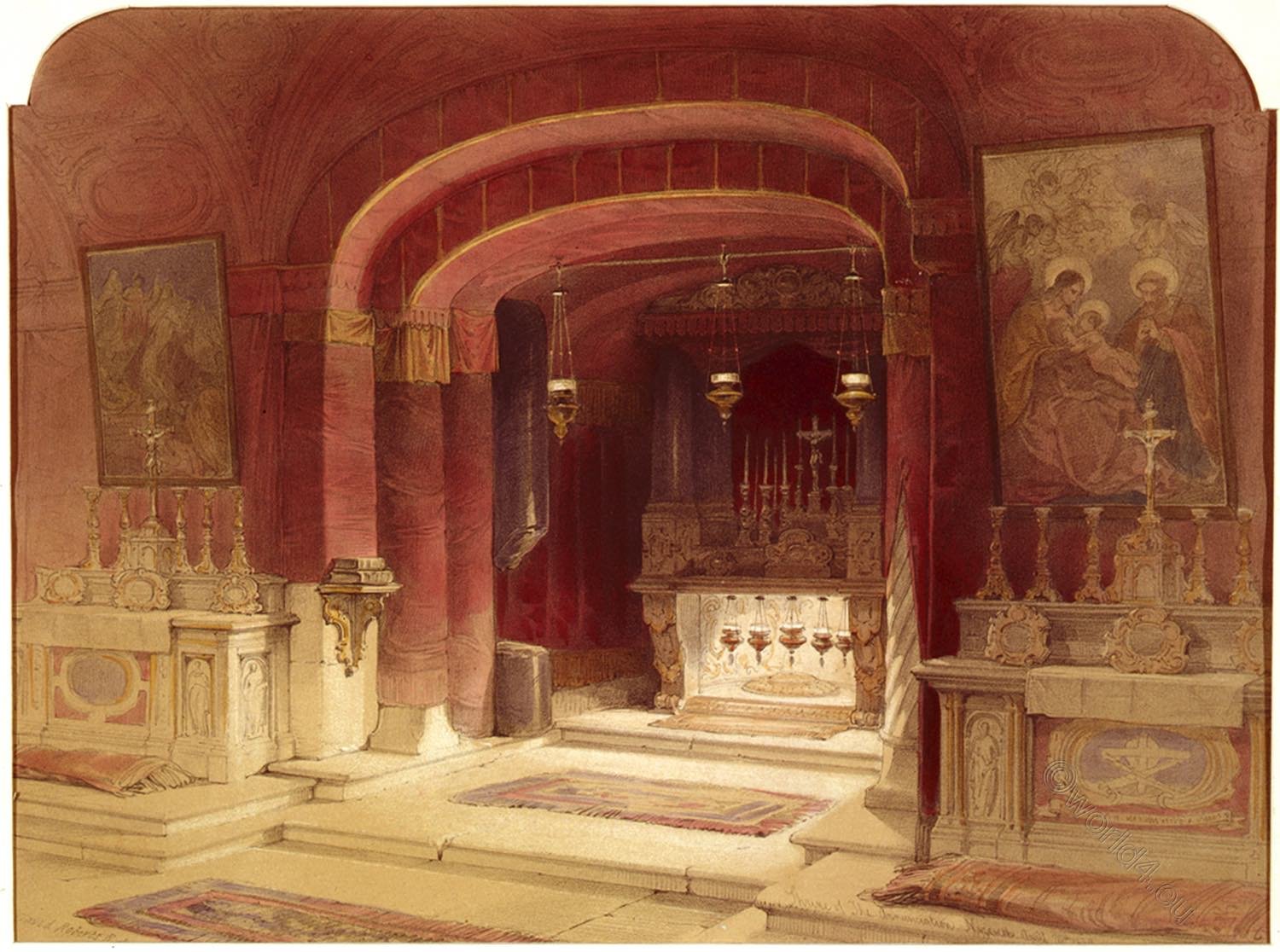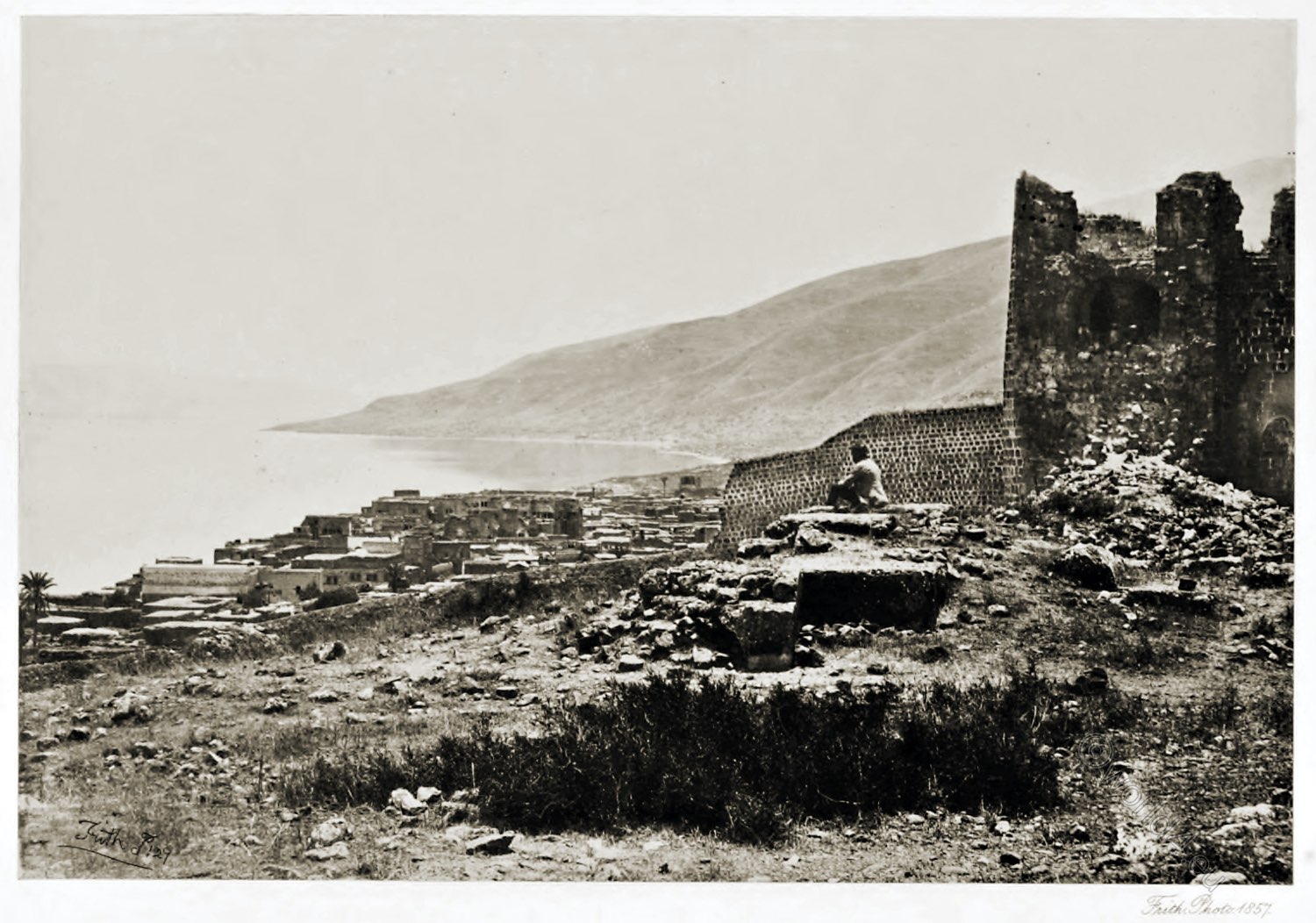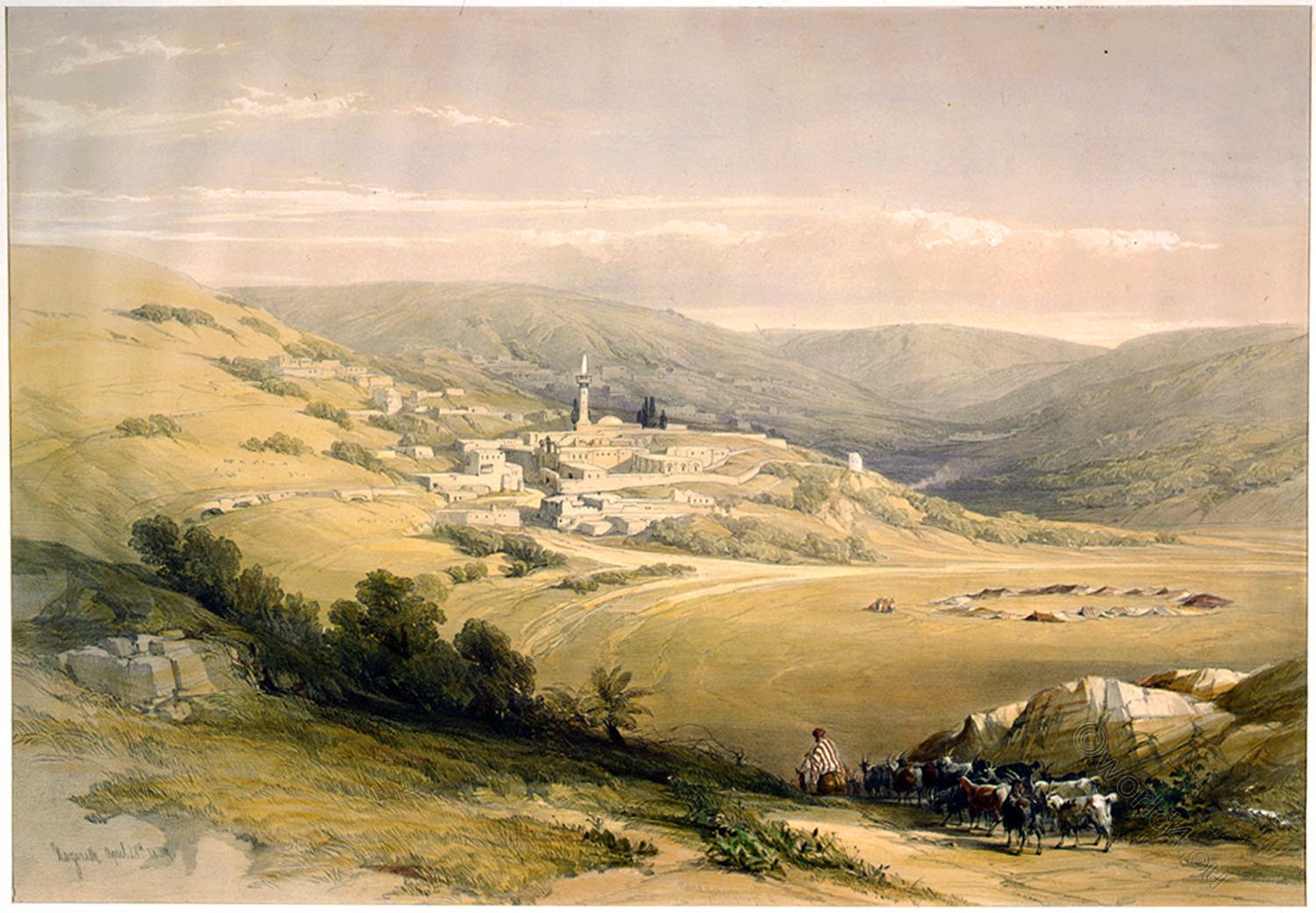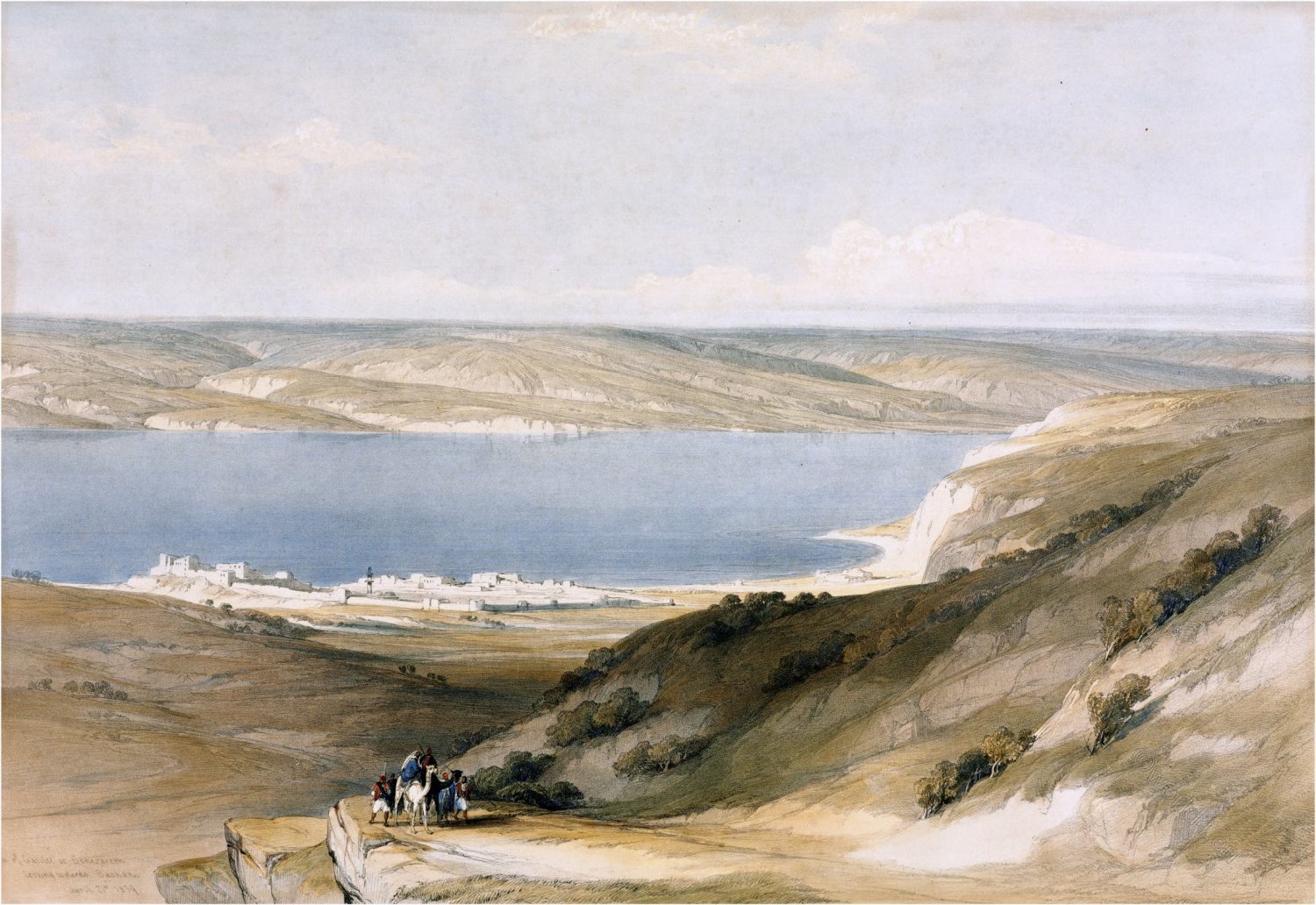
THE SEA OF TIBERIAS, LOOKING TOWARDS BASHAN
by David Roberts.
This Lake bears also the name of the Sea of Galilee, from the province; of Tiberias, from the City; and of Gennesareth, from a tract of fertile land extending along its western shore, from El-Medjel on the south, to Khan Minyeh on the north; its length, according to Josephus, being thirty stadia, and its breadth twenty. It was remarkable for the abundance and excellence of its fruits, and was famed for a fertilizing fountain, held by some to be a branch of the Nile, from its producing fish resembling the Coracinus, found in the lakes round Alexandria. The fountain was also called Capharnaum, probably from the town, 1) so often mentioned in Scripture as visited by our Lord.
On the sight of this Lake, De Lamartine says, in language which, though ambitious and poetic, yet conveys the common feeling of mankind: — “I had come to worship on the very shores, on the very waves which had borne Him; on the hills where He had sat, on the stones on which He had rested His head. He had a hundred times walked on that beach which I now trod with reverential homage. His feet had trodden the dust which was now under my own. He sailed in the barks of the fishermen on the Sea of Galilee; He walked on its waves, stretching His hand to the Apostle.” 2)
The Artist thus gives his personal impression of the scene: — “Passing through a beautiful country, in about five hours we came in sight of the Sea of Galilee, embosomed in surrounding hills; far on the left lay Mount Hermon, covered with snow; and on a nearer hill rests the City of Safed. Here, at a glance, lay before us the scenes of our Savior’s miracles; but the population and the boats have disappeared. Towards the west the River Jordan was seen flowing from the Lake towards the Dead Sea, and below us lay the Town of Tiberias.” 3)
The author of the Biblical Researches thus describes the aspect of the Lake: “We reached the brow of the height above Tiberias, where a view of nearly the whole Sea opened at once upon us. It was a moment of no little interest; for who can look without interest upon that Lake on whose shores our Savior lived so long, and where He performed so many of His mighty works?
Yet to me, I must confess, so long as we continued around the Lake, the attraction lay more in these associations than in the scenery itself. The Lake presents, indeed, a beautiful sheet of limpid water, in a deep, depressed basin, from which the shores rise, in general, steeply and continuously all around, except where a ravine, or sometimes a deep wady, occasionally interrupts them.
The hills are rounded and tame, with little of the picturesque in their form; they are decked by no shrubs or forests, and even the verdure of the grass and herbage, which, earlier in the season, might have given them a pleasing aspect, was already gone; they were now only naked and dreary. One interesting object greeted our eyes,—a little boat with a white sail, gliding over the waters: the only one, as we afterwards found, upon the Lake.
The form of its basin is not unlike an oval; but the regular and almost unbroken heights which enclose it bear no comparison to the vivid and powerful effects which the wild and stem magnificence of the mountains produces around the Caldron of the Dead Sea. The position of the Lake of Galilee, embosomed deep in the higher tracts of country, exposes it, as a matter of course, in summer to gusts of wind, and in the winter to tempests. One such storm is recorded during the course of our Lord’s ministry.” 4)
The dimensions of the Lake are variously stated by travelers, but the most probable calculation makes it about 14½ miles long, and from 6 to 9 miles wide. Myriads of birds resort to its shores. Its water is cool and clear, and abounds with fish, though, for want of boats, few are caught, and those are consequently sold at a high price—the price of meat. To encourage and aid the inhabitants in deep-lake fishing would be one of the greatest boons which could be conferred upon them. On looking down upon the Lake, the course of the river, of which it is only an enlargement, can be distinctly traced through its centre, by the smooth surface produced by the current of “the River of the Prophets, and the River of the Gospel”— the Jordan.
1) Joseph. Bell. Jud. iii. 8. 2) Travels. 3) Roberts’s Journal. 4) Biblical Researches, iii. 252.
Source: The Holy Land, Syria, Idumea, Arabia, Egypt, & Nubia, by David Roberts, George Croly, William Brockedon. London: Lithographed, printed and published by Day & Son, lithographers to the Queen. Cate Street, Lincoln’s Inn Fields, 1855.
Continuing
Discover more from World4 Costume Culture History
Subscribe to get the latest posts sent to your email.

